The Pacific Northwest is half a world away from Scandinavia, and the Vikings never reached it on their voyages to North America, but their influence on contemporary boatbuilders did. In the ‘80s, when I began to take an interest in boatbuilding, I admired the Norse-influenced boats built by two of the region’s local builders: Paul Schweiss, who had trained in Norway and was building traditional Bjorkedal boats, and David Jackson, who built the faering that my friends Ginger Cox and Tish Davis rowed the length of the Inside Passage in 1976. The current and most prolific practitioner of Norse boatbuilding here is Jay Smith, operating as Aspøya Boats in the forested fringe of Anacortes, Washington.
For the past several years, Jay has been working with the Friday Guild: Leah Kefgen, her brother Per Brekke, Matt Fahey, Vernon Lauridsen, and Torolf Torgersen. The group, which had built the geitbåt featured in our September 2016 article “Building on Tradition,” is now working on a 17′ Nordford faering. The boat was documented in The Inshore Craft of Norway, and when the drawings were made in 1943, the boat was reported to be over 100 years old. When the faering is finished, it will be Leah’s “company yacht” for Best Coast Canvas, the maker of the Verksted Apron I reviewed this past spring. I’ve been keeping up on the progress on the faering through Leah’s Patreon posts and emails, and when she and Jay invited me to see the boat, I paid a visit to the boatshop on the first Saturday in September—the Friday Guild now meets on Saturdays, but kept the name. While the crew was busy installing sections of the sheer planks, Jay gave me free rein to wander around the shops and sheds.
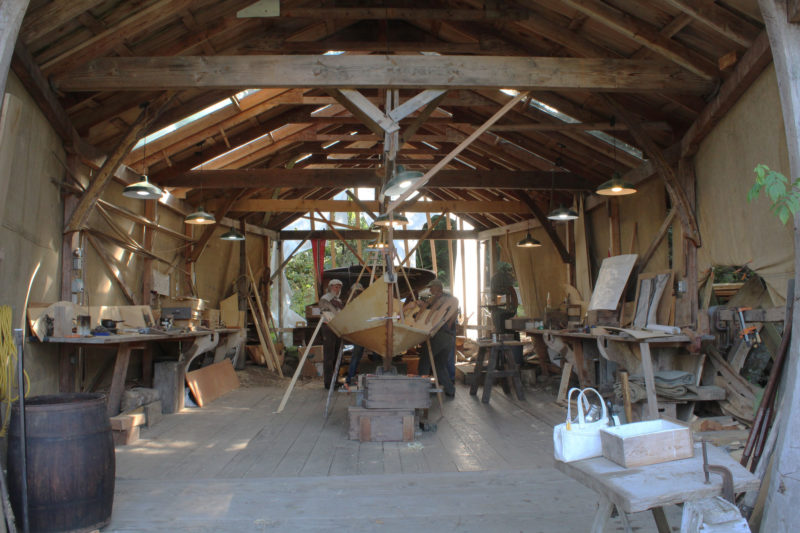
In a shed at the end of Jay’s driveway, an 18′ Nordfjord faering is taking shape. The workbenches on either side are built with diagonal braces that extend beyond the front edge of the top and have notches to hold planks on edge.
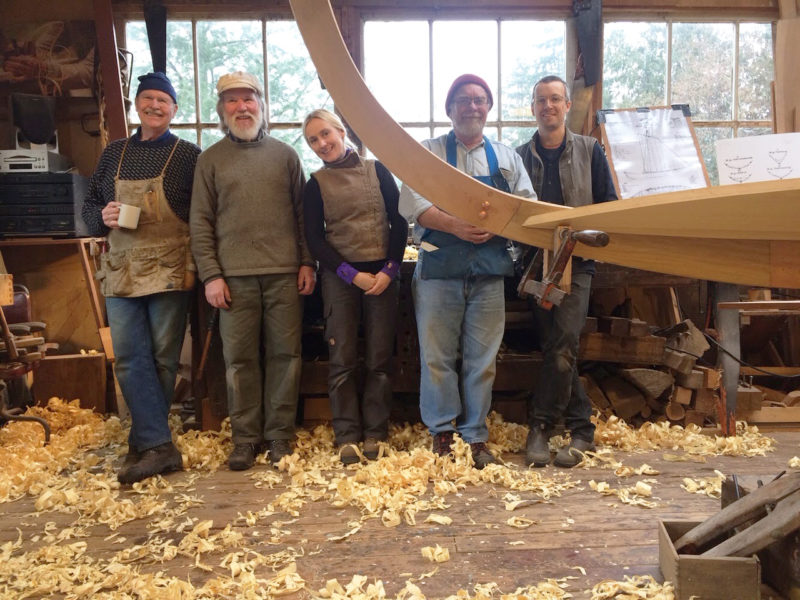 Leah Kefgen
Leah KefgenThe Friday Guild is composed of, from left, Torolf Torgersen, Jay Smith, Leah Kefgen, Vernon Lauridsen, Per Brekke, and, not present here, Matt Fahey.
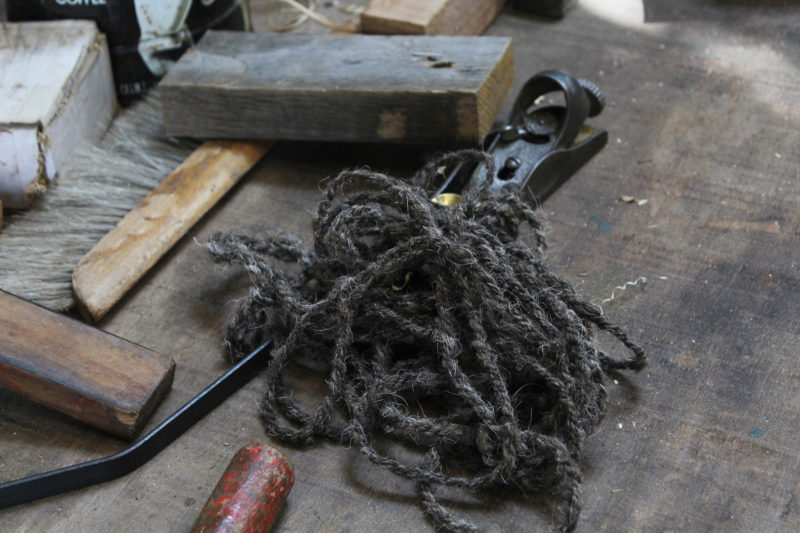
The wool yarn that goes into the laps to make them waterproof is called siggj, pronounced soy-ch, the Faroese term that Jay picked up during his apprenticeship on the Faroe Islands. The yarn is called sisnor in Norwegian, “a loose string of animal hair, well tarred, inserted between strakes before riveting.” Leah’s mother, Kristi, spun the yarn from raw fleeces from an Oregon flock of Herdwick sheep, a breed native to northwest England, the ancestors of which may have been brought by Norse settlers in the 12th century.
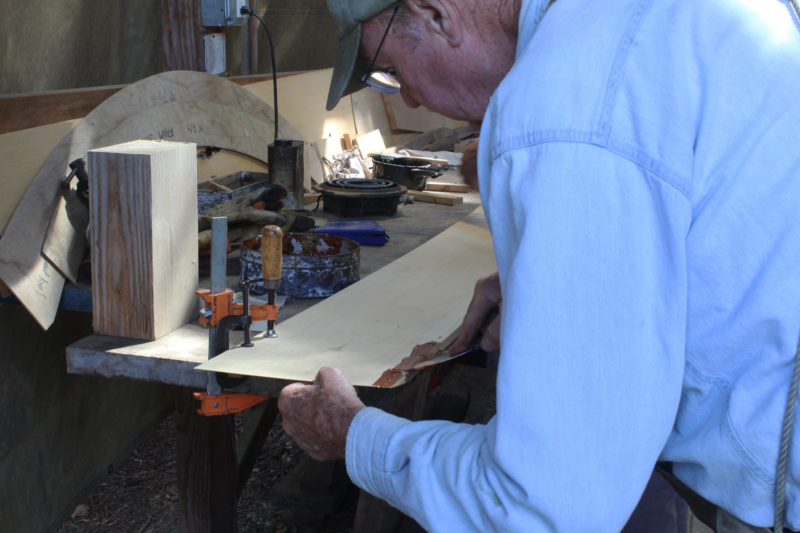
Torolf applies hot bedding compound to the sheer plank section he had been working on. It’s a mix of Dolfinite, linseed oil, underwater seam compound, and pine tar. It’s heated up in its can on the hot plate. The warm mixture is easier to spread and bonds better with the wood.
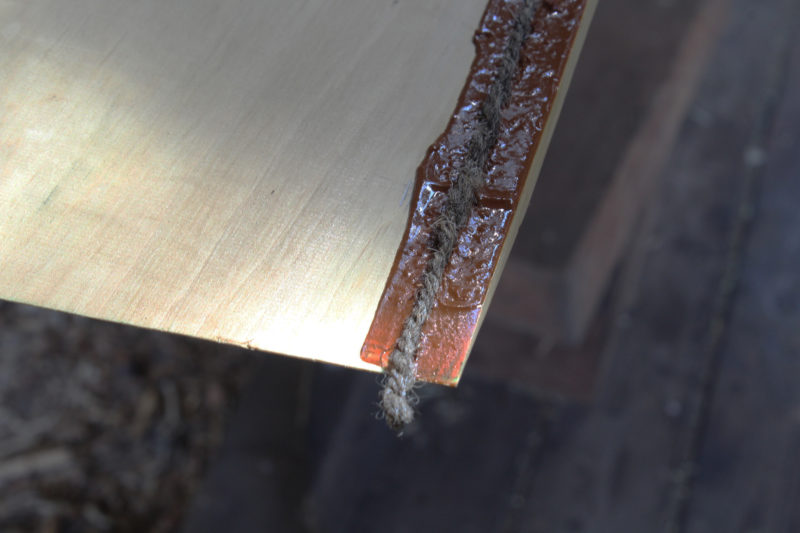
The twisted wool yarn sticks to the bedding compound to be sandwiched in the lap to keep it watertight. The lap is drawn tight over the siggj with a hollow cove, cut with a special plane, called a siggjhøvil in Faroese.
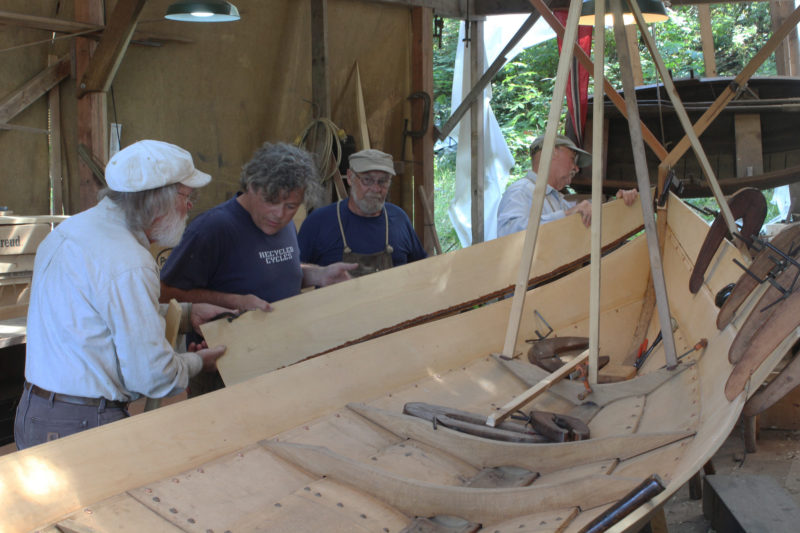
Jay, left, and Friday Guild members Matt, Vern, and Torolf bring Torolf’s sheer plank to the hull to clamp and fasten it in place. Each section of planking is made by one member of the Friday Guild rather than shared among them. It’s a traditional way of doing the work: Leah mentioned that the planks of surviving Viking ships bear several different decorative treatments, called pynt, planed or scraped along the edges by the builder who made the piece.
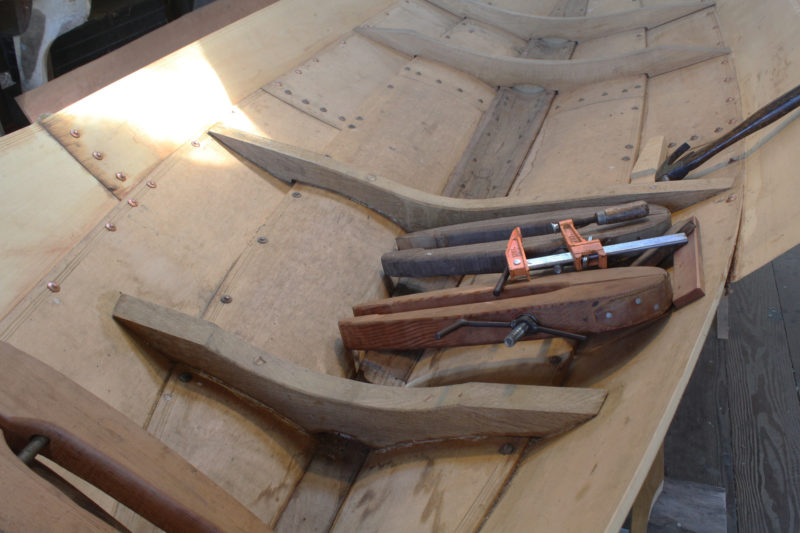
The most hard-won shapes in the faering will be hidden when the floorboards are in place. The floor timbers here reveal the curves across the width of the garboards, carved from slabs of Alaskan yellow cedar 2″ to 3″ thick. And the top of the T-shaped keel is concave, offering the garboards parallel surfaces to better hold the rivets.
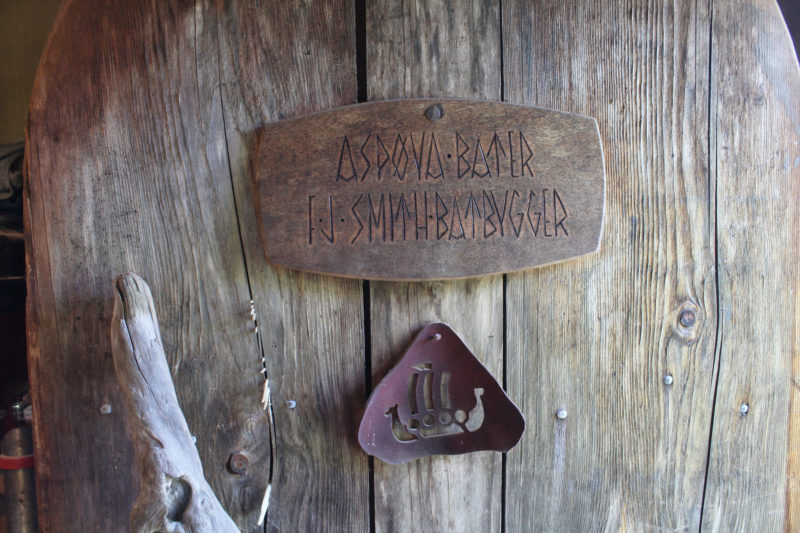
The sign on Jay’s shop door, carved by Torolf in Norwegian in runic-like characters reads: Aspøya Boats, F J Smith Boatbuilder.
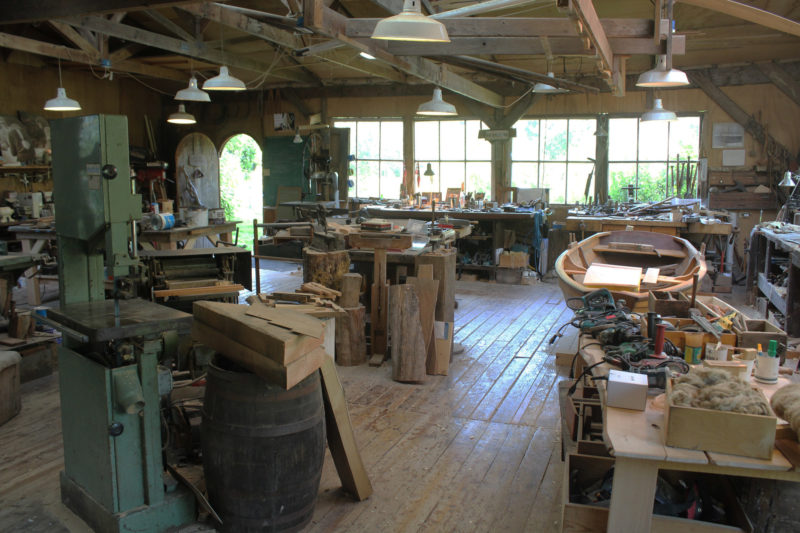
The 1,000-square-foot shop is well-lit by windows along its northwest and northeast walls. There are tools, benches, and pieces of wood everywhere, but the paths around them are clear and nothing gets underfoot.
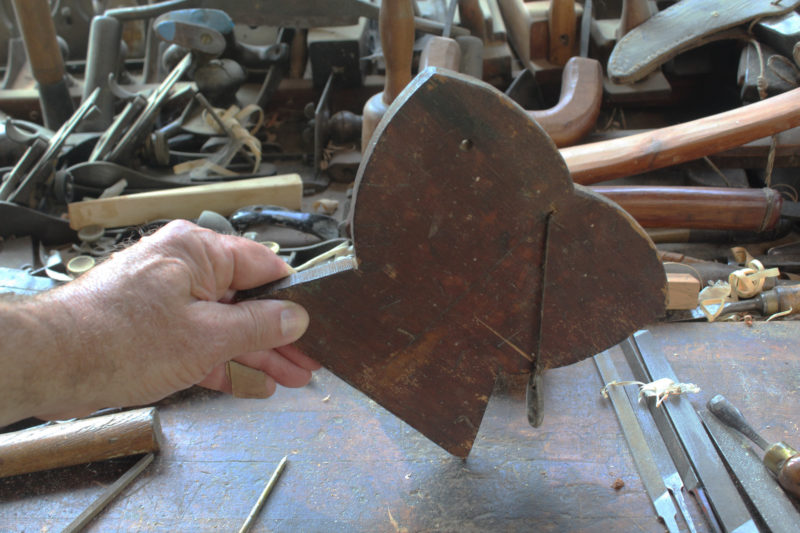
Norse boats are built upright without molds, so this device, called a båtlodd or båpasser is used to determine the lay of the planks. The small plumb bob indicates the angle, which is marked along the curved edge.
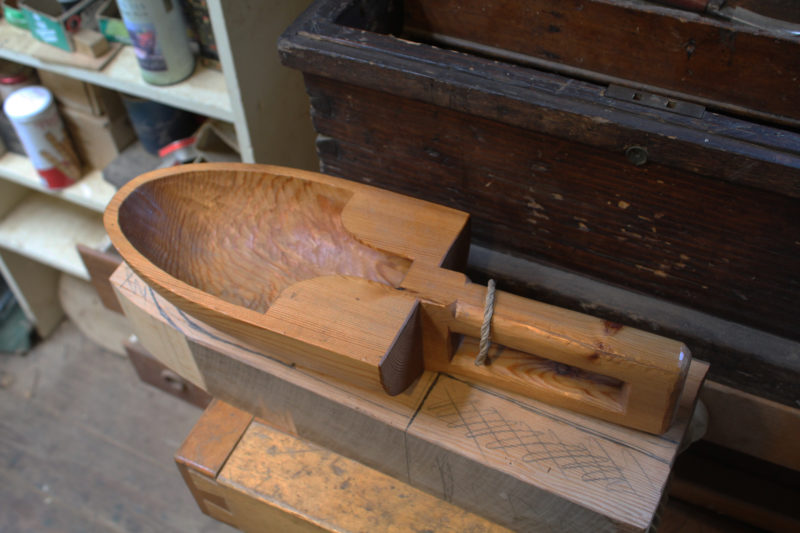
This traditional form of bailer, auskar, sitting in the shop was handsomely carved from Douglas-fir. The block it rests on has the pattern drawn on it.
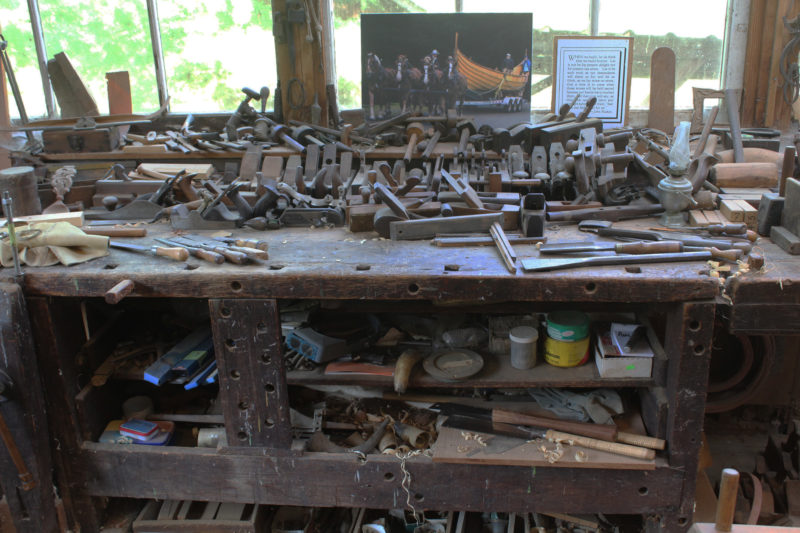
The bench on the northwest wall has, among other tools, a half-dozen spokeshaves, nine marking gauges, five plumb bobs, three radius planes, 35 wooden planes, four metal planes, two back saws, and a dozen chisels and gouges. The photograph at the back of the bench is of Jay’s 37’ POLARIS, launched in 2017.
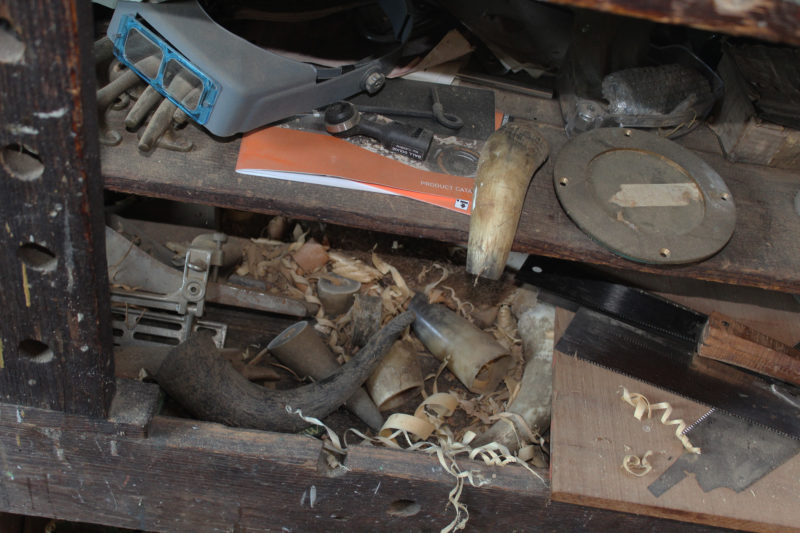
Under that bench there is a collection of cow horns. Rings cut from the open end of a horn are used with shroud needles, devices to tighten the standing rigging. The ends get used as containers for the tallow used to lubricate oar leathers.
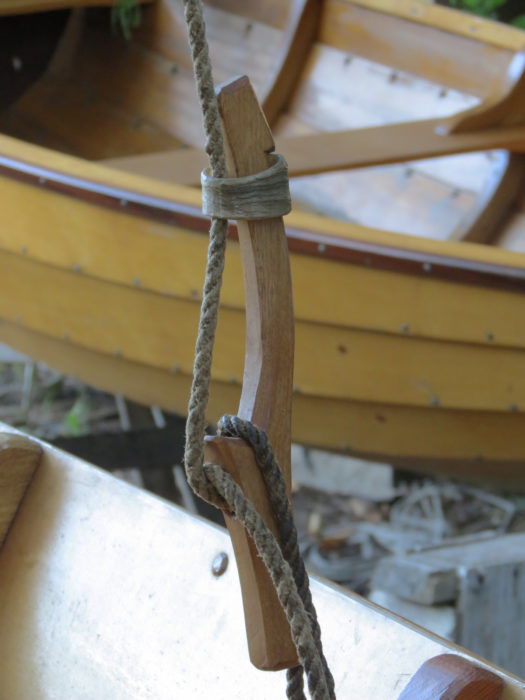 Jay Smith
Jay SmithHere’s a ring of cow horn on one of the geitbåt’s shrouds.
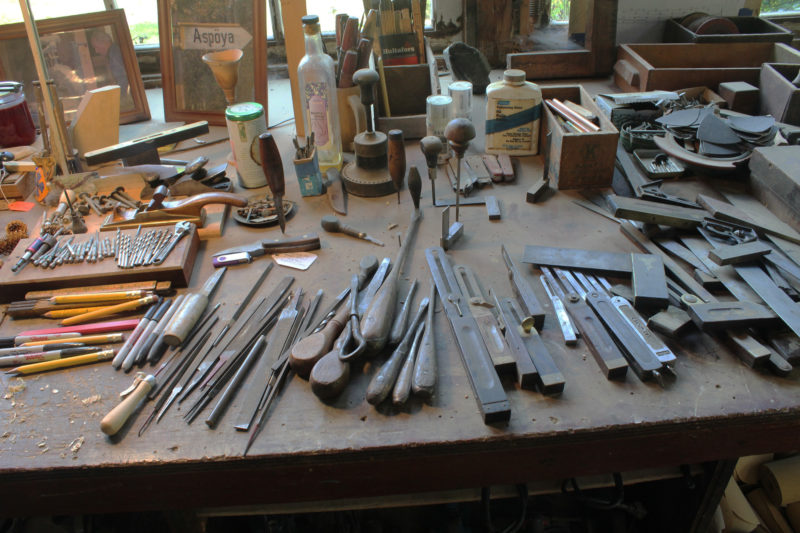
Jay’s cluttered workbenches are not without order. Here, markers, pencils, drill bits, files, screwdrivers, bevel gauges, knives, awls, and squares are all neatly arranged. I got the feeling that there was a place for everything and in time I could find my way around the shop if I needed to find a tool. The framed picture at the back of the bench is of a street sign in western Norway, pointing the way to Aspøya, the island where Jay served as an apprentice to a master boatbuilder, Nils Ulset, in the late 1970s.
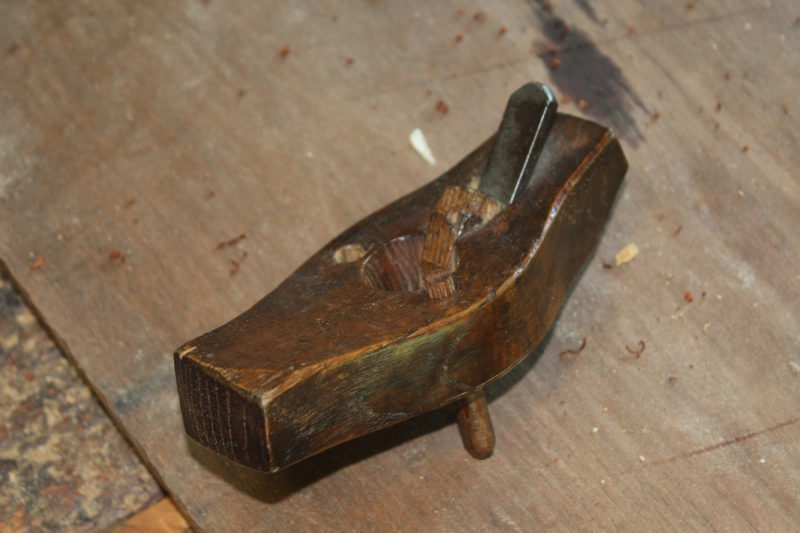
Jay made this benchmark plane during his apprenticeship in the Faroe Islands. The oak has been smoothed and polished by four decades of use.
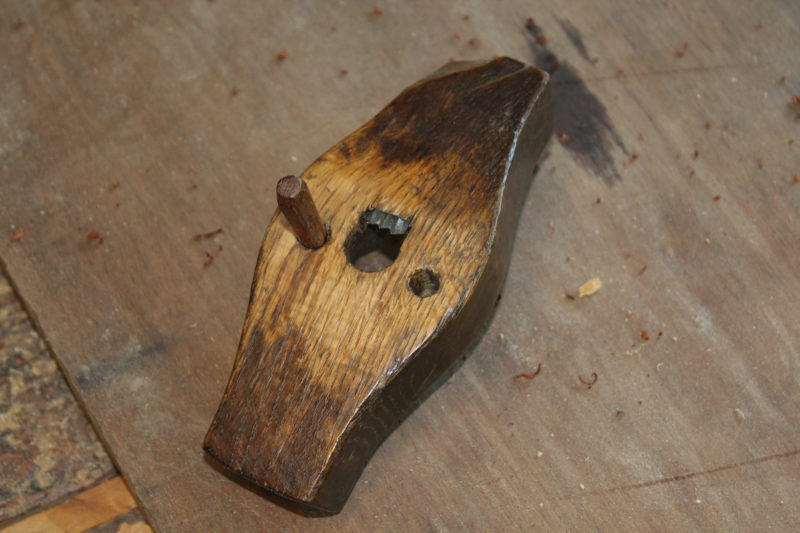
Known in Norway as a pynthøvel (pynt=decoration; høvel=plane), the plane has a custom-made blade to cut the grooves that are the distinctive mark of boats that emerge from the Aspøya shop. The peg guides the plane along the plank edge and can be put on the other side of the blade to cut in the other direction.
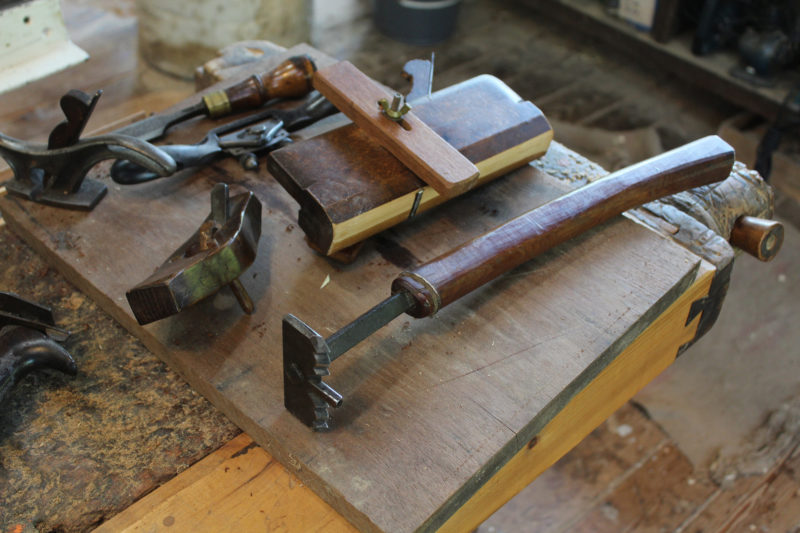
The pynt can be scraped as well as planed. The tool in the foreground, a båtstrek, has the decorative pattern duplicated on either side of a central pin that follows the edge of the plank. The tool can be used in either direction to avoid creating tear-out by working against the grain.
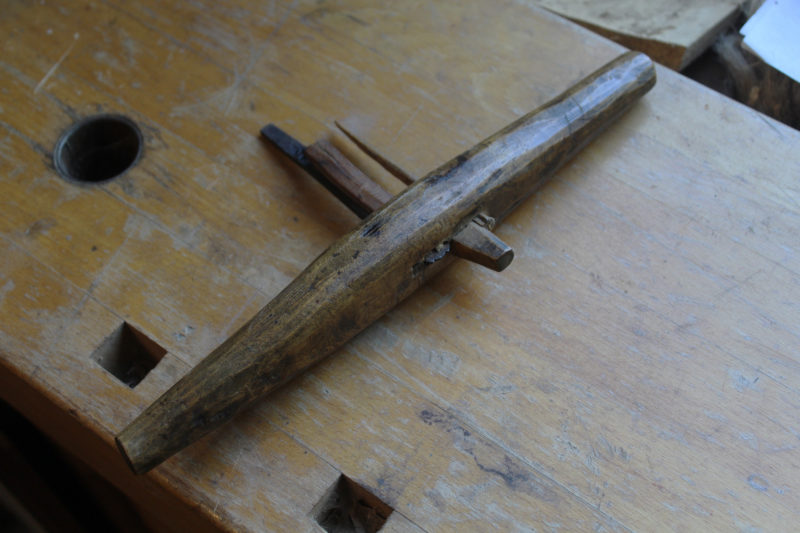
Yet another tool for creating the plank-edge pynt is this spokeshave-like scraper. This one may be nearly a century old.
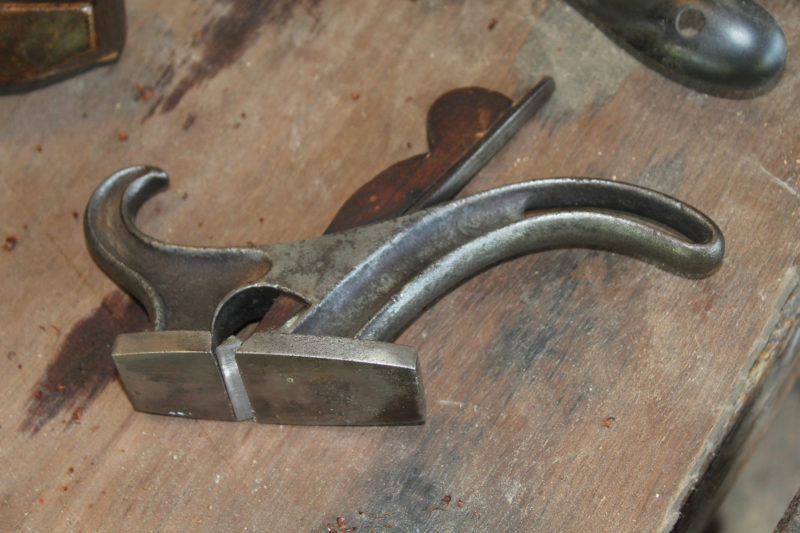
Jay found this plane at a yard sale, and didn’t know what it was designed for but couldn’t pass up buying it. The width of its sole was an exact match for the laps of the planks for VALKYRIE, his largest boatbuilding project, and with the plane’s ability to cut to the edge, it was perfect for working the gains. After a little poking around on the web, I identified the tool as a coachmaker’s plane, and this one with a narrow handle on a wider sole is a T-rabbet type.
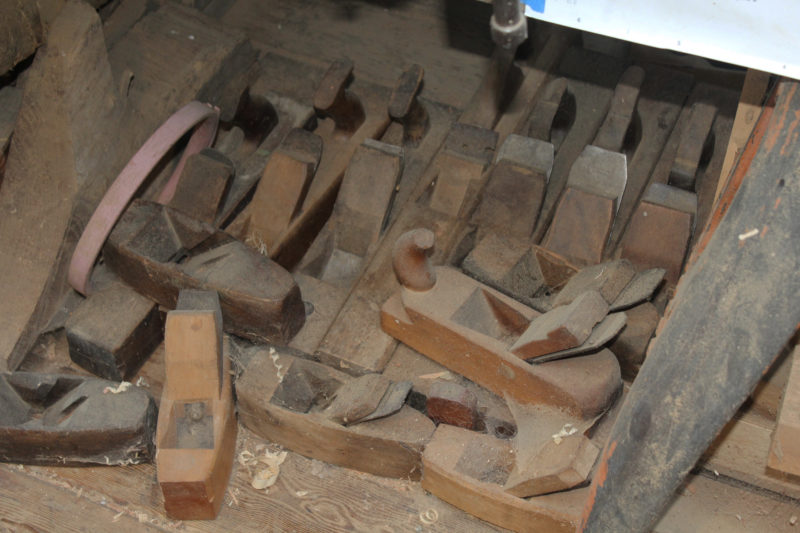
Wooden planes that don’t have places on the workbench are nested together under them, gathering cobwebs and dust.
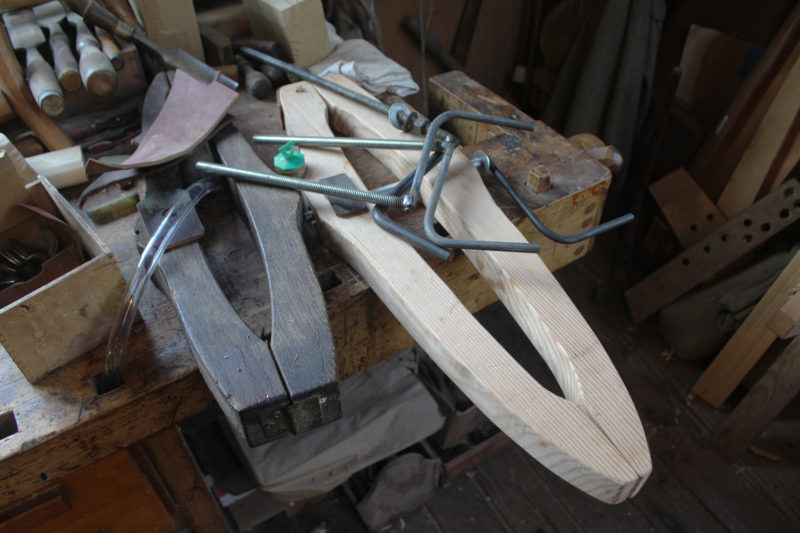
Wooden planking clamps and the parts to make them were scattered everywhere in the boatbuilding sheds and shop. The darker older clamp has a metal hinge; the new clamps use a leather strap instead. I didn’t see any of the cam-operated clamps that I’ve made for my shop, but I work with a small range of plank thicknesses, so the limited capacity of the cams isn’t an issue for me. Jay’s version with a threaded rod works as well on the faering’s planks as on his largest projects.
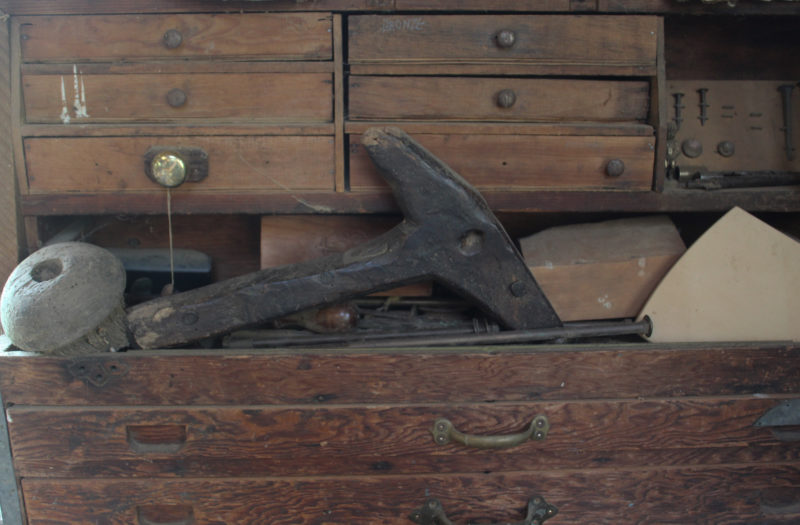
There were several old traditional oarlocks that Jay had collected in Norway. Called kjeip (or kjæppa in dialect), these are cut from a tree trunk and branch, with the trunk providing the near-vertical pin the oar pulls against and the branch fastened at the sheerline.
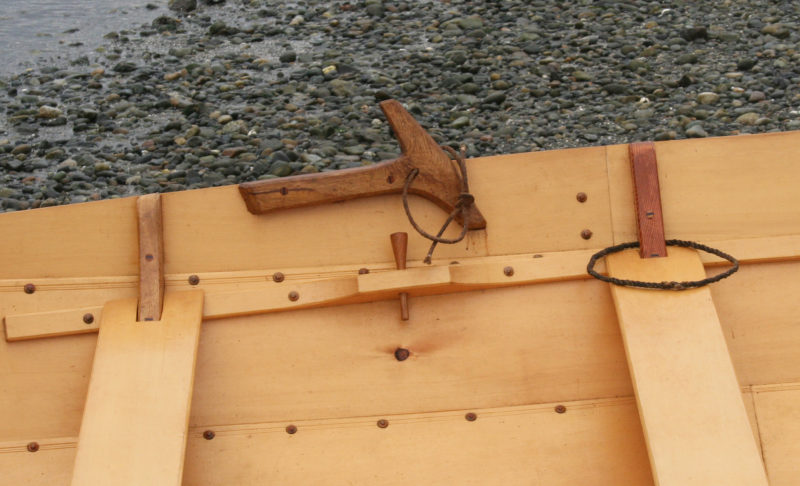
This kjeip or oarlock on the geitbåt, is fastened at the sheer with two trunnels that connect it to the sheer plank and the outwale. A third trunnel connects the kjeip with the sheer plank alone. The grommet holds the oar loom in place at the recovery of the stroke.
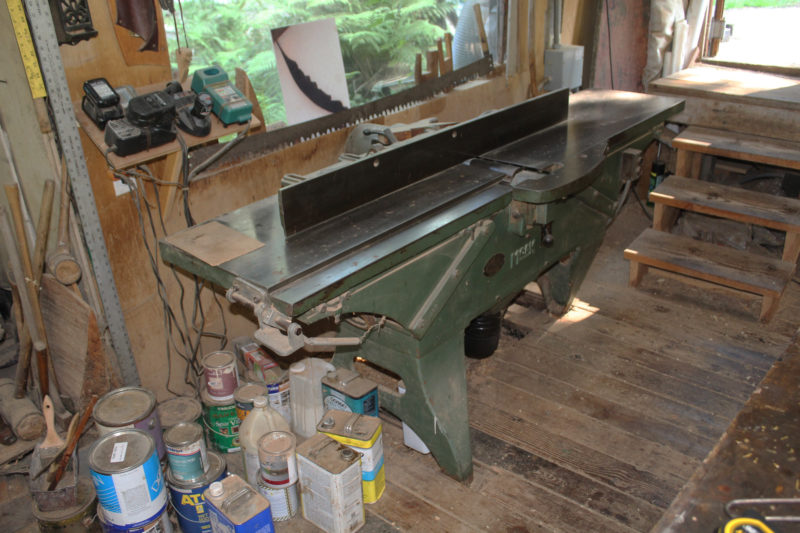
Jay’s 12″ x 7′ jointer was made by Moak Machine & Tool Company of Port Huron, Michigan. The company closed in 1992 after being in operation since 1915. The jointer was set in the east corner of the shop and long stock could be fed across the sill of the open door.
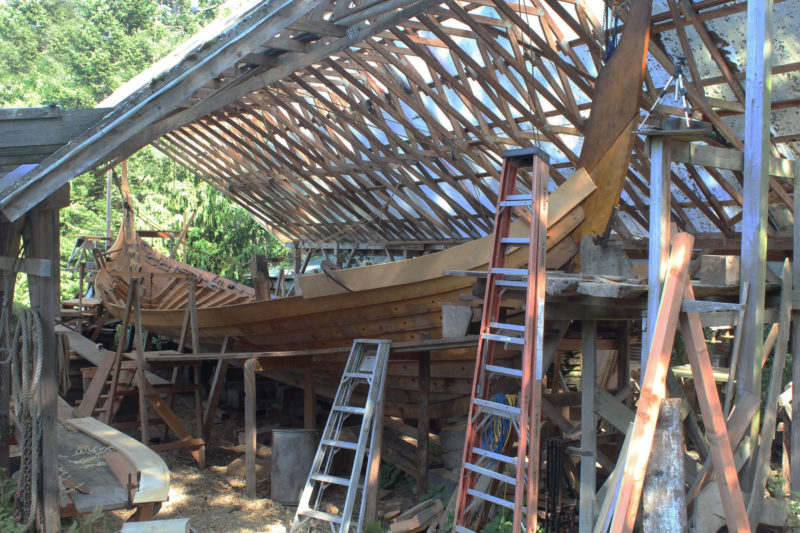
To the east of the shop is Aspøya’s biggest shed—The Pavilion. In it is VALKYRIE, a 56′ scaled-up reproduction of SKULDELEV 6, a 990-year-old 37′ fishing vessel from western Norway.
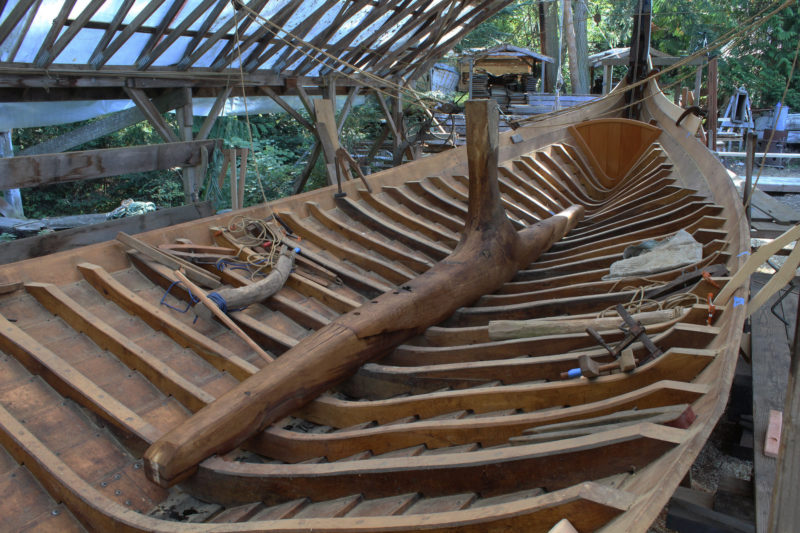
In many ways, working on the VALKYRIE is very much like working on the faering, but while it is three times longer than the Nordfjord faering, it is quite a different project because the weights involved go up by the cube of that linear scaling. The center section of the three-piece maststep, for example, is a trunk and limb from an oak tree and weighs 1,400 lbs. A similar piece, if it were part of the faering, would weigh less than 12 lbs.
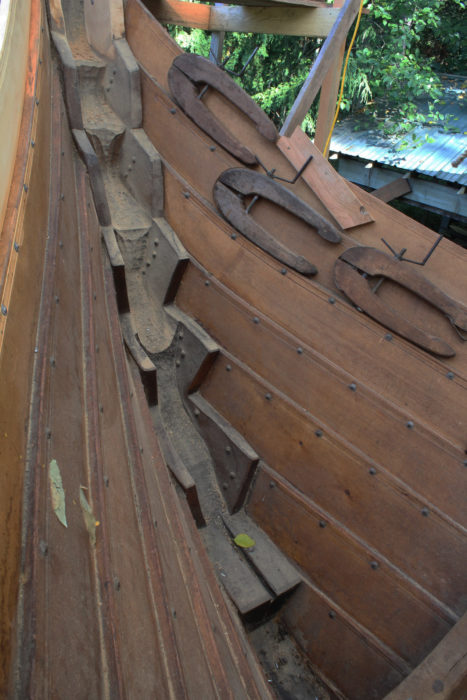
The stems of VALKYRIE have “wings” that meet the broad hood ends of the planks. I carved this type of stem on my reproduction of the Gokstad faering. There were only three strakes to that boat and it took me two weeks just to figure out how to approach the stems and then the best part of a month to carve them.
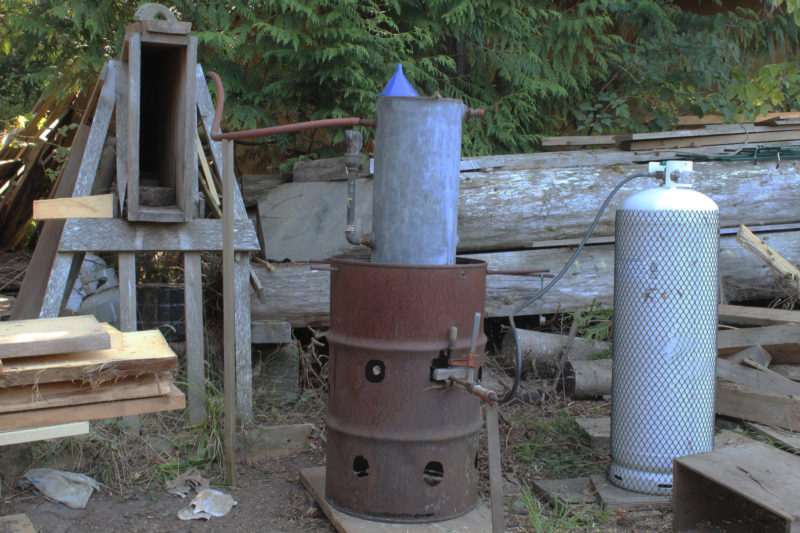
The steambox at Aspøya is propane fired and feeds a large wooden box set in the midst of all of the boatbuilding shops.
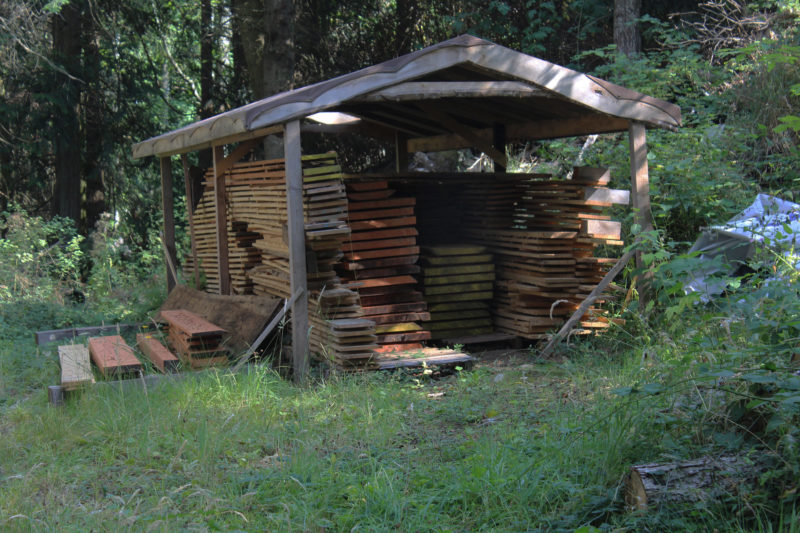
I counted four sheds built to shelter the lumber milled onsite with a portable bandsaw mill.
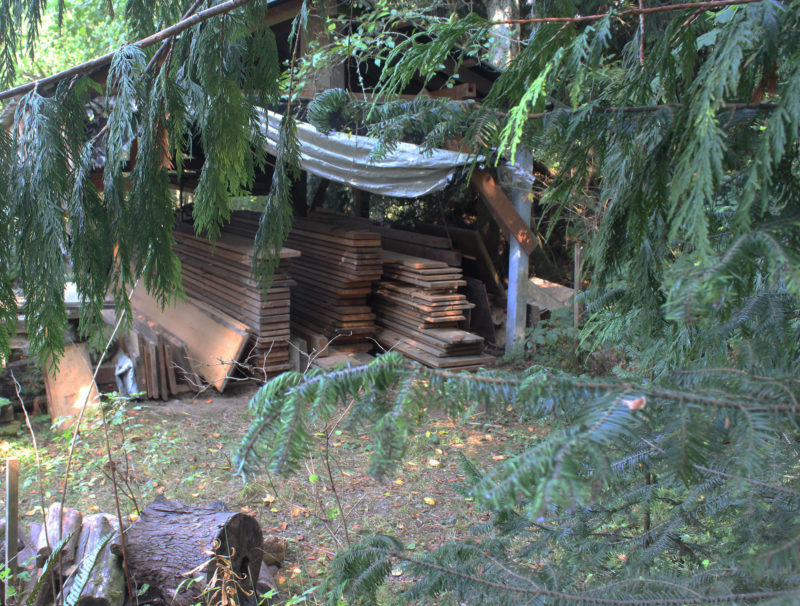
Tucked away among cedar and fir trees, another shed protects stickered stacks of lumber.
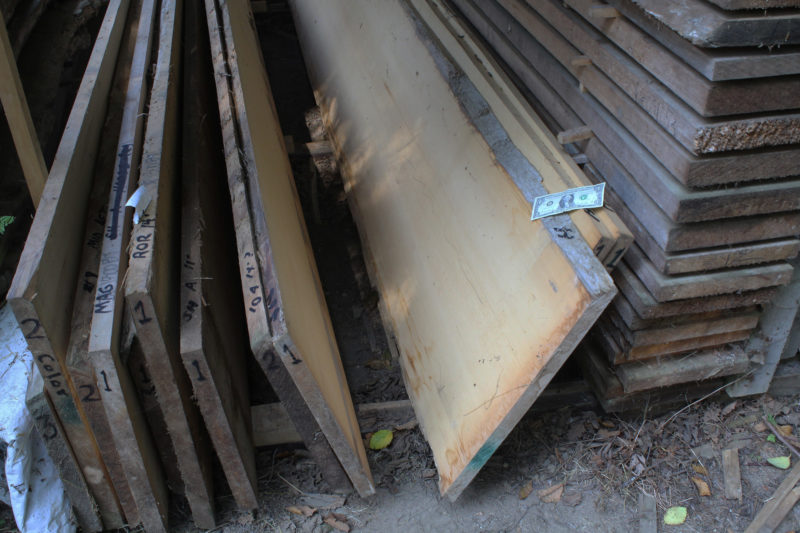
In the shed above there were some wide planks of flawless Alaskan yellow cedar. I put the dollar bill there for scale.
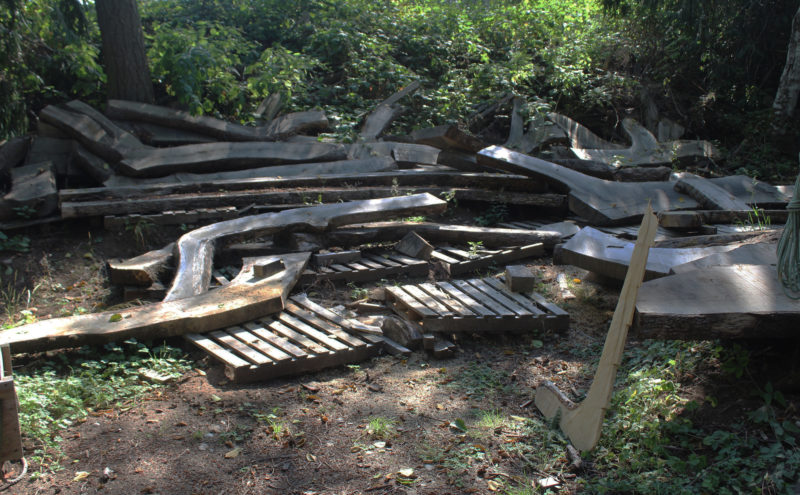
Traditional boatbuilding often required grown crooks. Jay had oak crooks piled on pallets at the edge of the brambles.
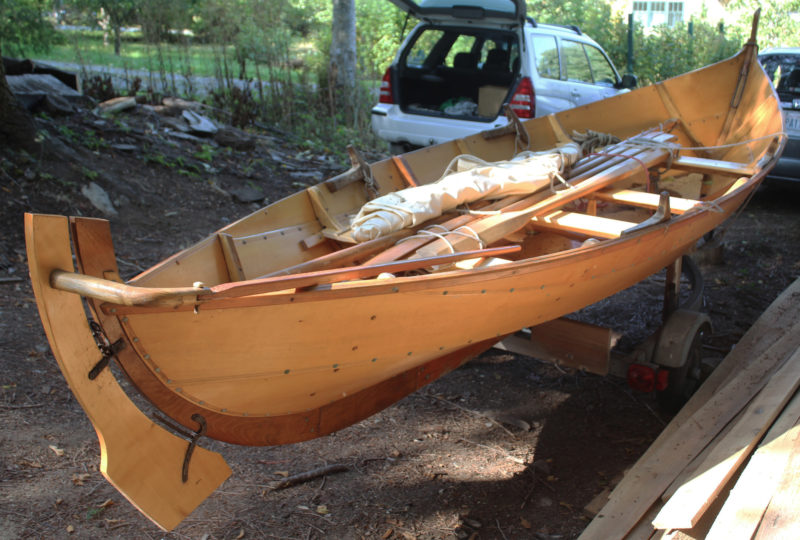
The geitbåt built by the Friday Guild in 2016 rests on a trailer near the shop that housed the Nordfjord boat project.
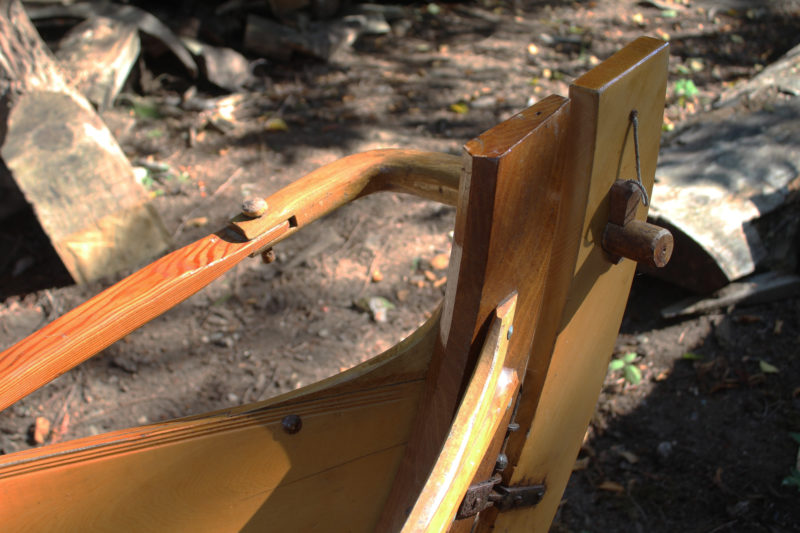
The geitbåt’s Norwegian-style tiller is made with a right-angled crook. It has a round pin through the rudderhead to provide a vertical range of motion, while a joint on its forward end allows its lateral range.
If Jay’s stock of lumber and tools is any indication, Aspøya Boats will be producing beautiful Viking-inspired boats for a long time to come.![]()

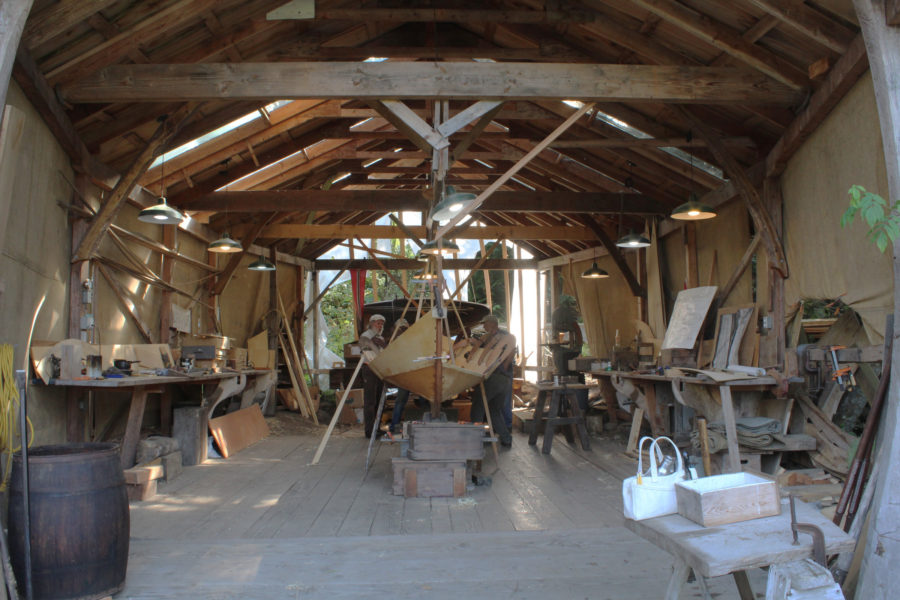
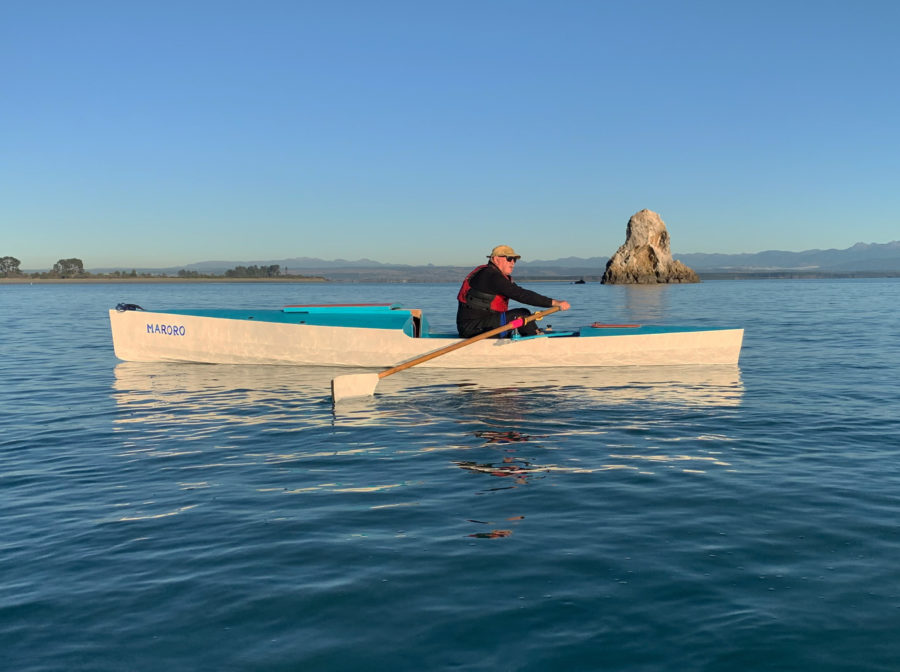
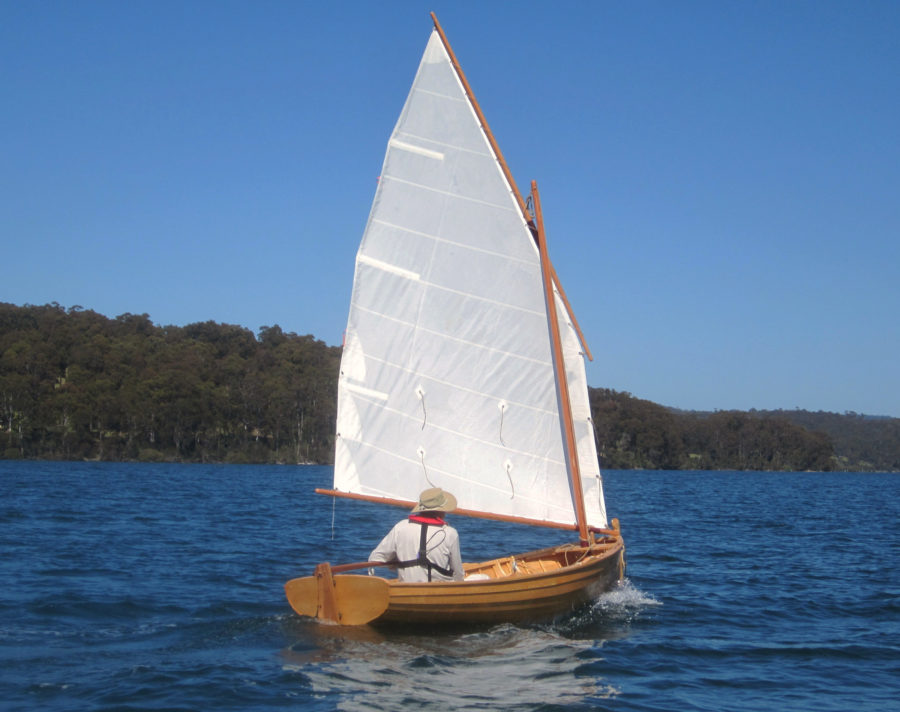
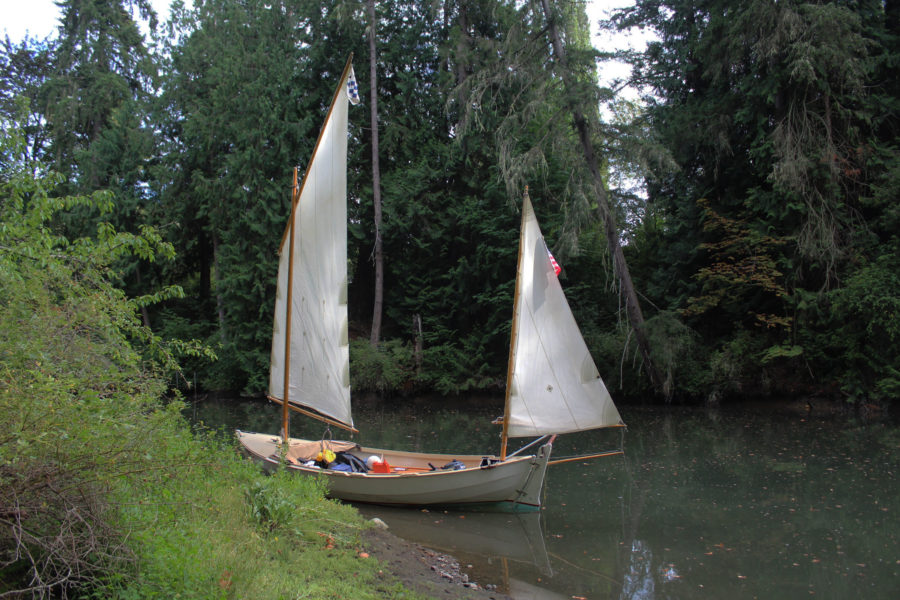
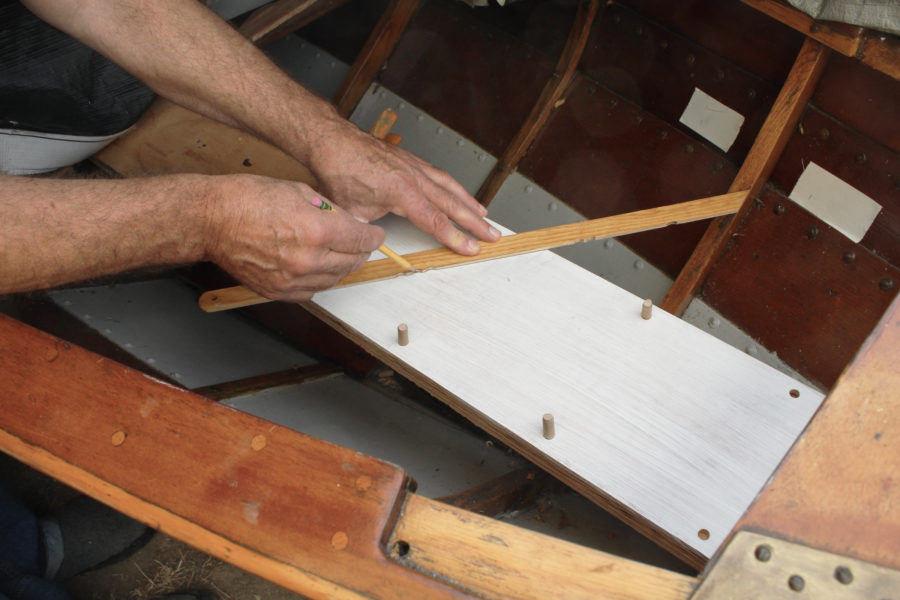
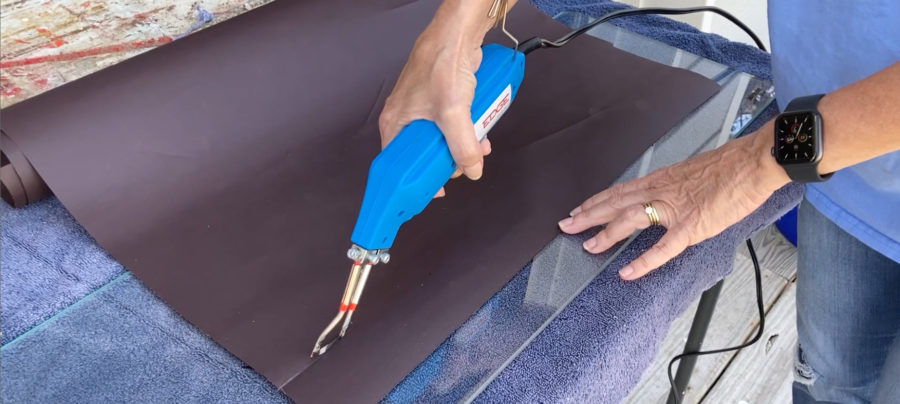
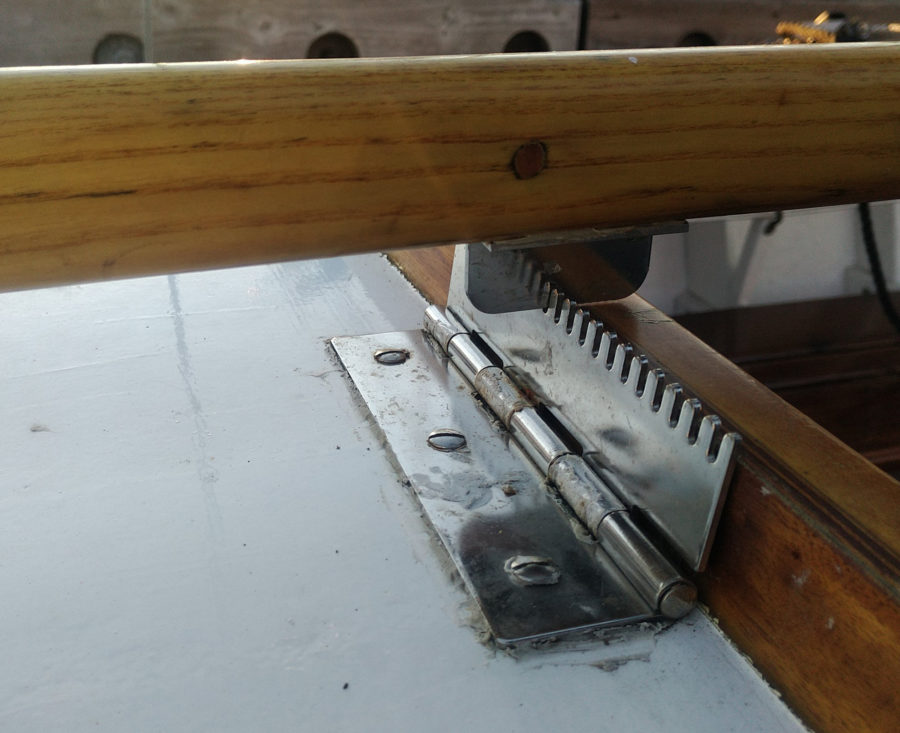
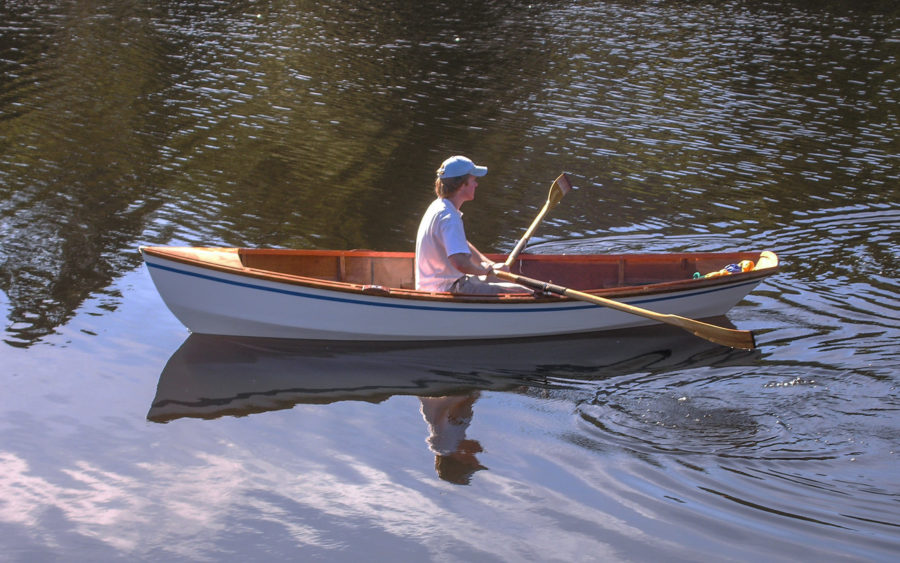
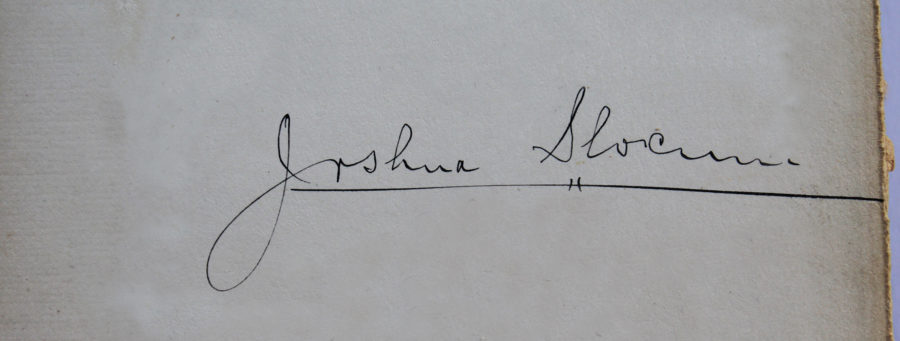

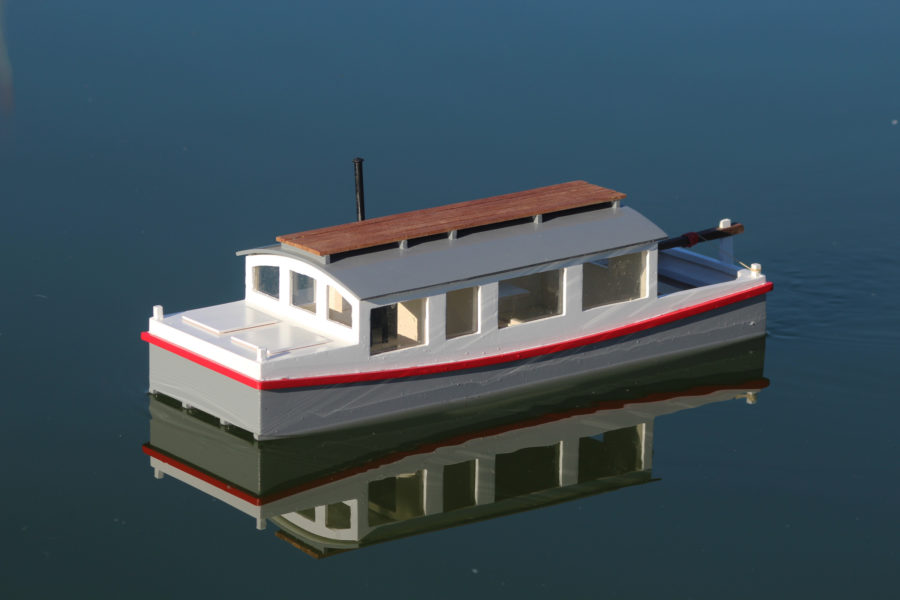
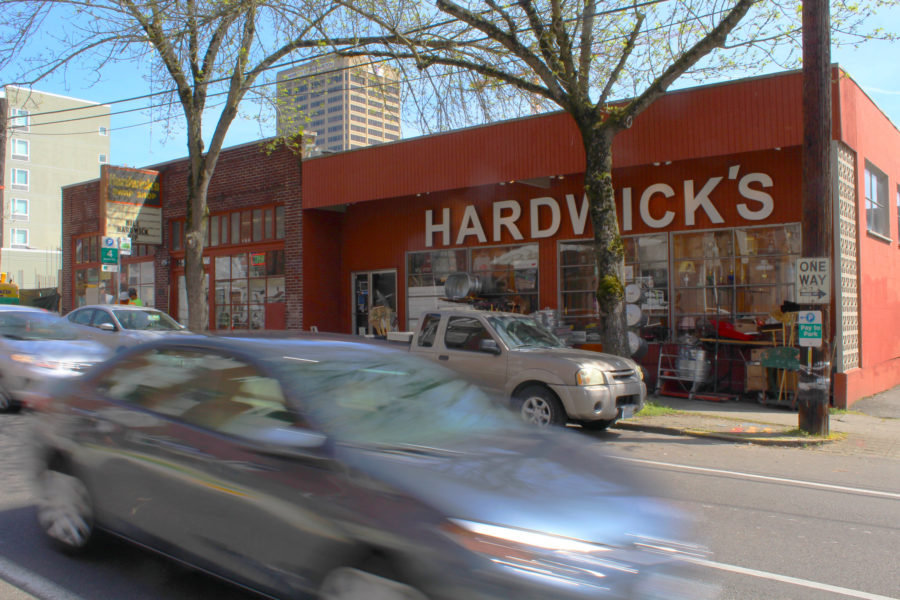
Wow! This is a wood lover and boat lover and tradition lover’s version of heaven. So much to admire here. Thank you for showing us this amazing shop and its artisans.
Wayne McCallum
I really enjoyed this. Thanks.
Incredibly authentic Norse culture alive and well in the Pacific Northwest. I guess the climate boosts the health and welfare of these folk—”wink.”
Great images and detailed explanation of components and build procedure. Thank you.
As an automotive designer though, I can’t get my head around the “winged” stem……..is it carved one piece?
Jim Grant
Melbourne, Australia
Each winged stem is carved from a single piece of wood. When I made my Gokstad faering I often wondered how the builder of the 9th-century original knew how to carve the stems. I had to figure out a way to transfer information from the lofting to the stock I needed to carve.I didn’t work from a solid block but made each stem from three pieces, carving the wings’ inside and outside surfaces before gluing the pieces together. Jay would have insight into the traditional method.
Each winged stem is carved from a single piece of wood. When I made my Gokstad faering I often wondered how the builder of the 9th-century original knew how to carve the stems. I had to figure out a way to transfer information from the lofting to the stock I needed to carve. I didn’t work from a solid block but made each stem from three pieces, carving the wings’ inside and outside surfaces before gluing the pieces together. Jay would have insight into the traditional method.
Wow. The Norwegian tiller set up…. I don’t need it now but is one of those fanciful little tidbits which will come in handy someday. There is at least one gem like this in each Small Boat Magazine. Thank you and happy and safe Thanksgiving to all.